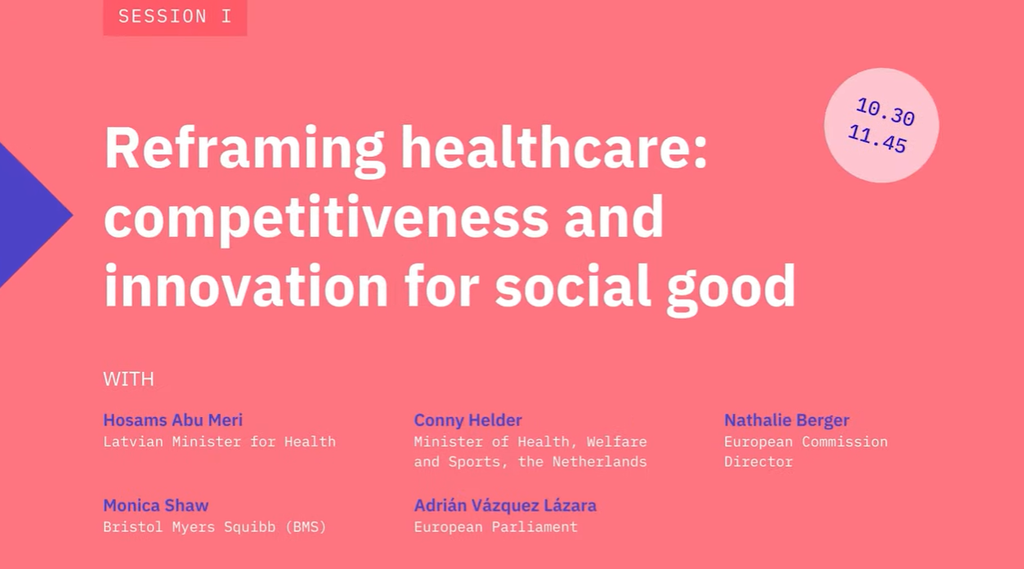Europe's moment: advancing clinical research and health innovation
Next event In person & online

- Area of Expertise
- Sustainable Livelihoods
Sustainable Livelihoods

Research Fellow at the Department of Health Care Management, Technical University of Berlin and the European Observatory on Health Systems and Policies, Berlin, Germany

Research Fellow at the European Observatory on Health Systems and Policies, LSE Health, United Kingdom
The COVID-19 pandemic has brought unprecedented strain on European health systems. Providers have had to simultaneously treat patients with a novel infection, limit the transmission of the virus to other patients, and maintain essential services. Given the wide variation in the organisation and delivery of health care services across Europe, their response to the pandemic has varied.
Since March 2020, the COVID-19 Health System Response Monitor – a joint initiative of the European Observatory on Health Systems and Policies, the WHO Regional Office for Europe, and the European Commission – has documented country responses to COVID-19. Based on the information collected from over 50 countries, it is possible to identify three key alternative and flexible approaches to delivering health care: increasing the use of digitally-provided services, implementing new processes to separate patients with COVID-19 to prevent transmission, and utilising private sector capacity.
Remote consultations, especially in primary care, have risen in several countries
First, it is important to note the near-universal trend during this pandemic relating to the increased use of digital services. This had led to a growth in remote consultations and virtual care. Many countries have introduced special COVID-19 telephone hotlines, in addition to pre-existing emergency numbers, that serve as the first point of contact for a patient seeking care. These do not necessarily offer medical advice, but provide guidance for patients on how to navigate the health system and access care, and help healthcare providers identify which patients to see in-person for treatment.
Before the COVID-19 pandemic, some countries required a doctor’s visit for sick leave certificates or prescription refills. Now, certain health systems have transitioned these to online or text message services. Remote consultations, especially in primary care, have risen in several countries. When conducted over video, doctors can share test results, images, or other files with patients to support diagnosis and treatment.
Second, health systems have also adopted several approaches to maintain physical distance between patients with (suspected) COVID-19 and non-COVID-19 patients. In addition to the remote treatments described above, several countries have begun to offer certain services, such as maternal consultations and routine vaccinations, only on specific days or times to limit transmission. Many healthcare facilities, including hospitals and outpatient providers, have, as much as possible, created separate spaces for COVID-19 patients, or limited the number of contacts that could occur between patients by setting a maximum number of people in waiting areas, removing objects from common spaces and more.
There is more and more pressure on strengthening primary and community care to face future waves
And finally, European health systems have varying levels of private sector involvement. However, some countries with private sector capacity have used this to supplement public sector provision, including for surge capacity or for maintaining essential services. Some countries have also mobilised volunteers or non-profits such as the Red Cross to provide services, especially to vulnerable groups at home, whilst others have called on the armed forces or police to provide supplemental support, for example, to collect test samples.
The three approaches described above in no way represent a comprehensive summary of the wide variety of changes to European health systems during the COVID-19 pandemic, but they provide some insight on how these systems are pivoting to more flexible ways of providing care. And, although it is too early to tell whether these strategies will continue after COVID-19, and how the health outcomes and patient experiences have changed due to the adaptions taken during the pandemic, there is more and more pressure on strengthening primary and community care to face future waves of this crisis. This is especially relevant if ambulatory settings oversee administering a future vaccine for COVID-19. In any case, the overall health system impact of COVID-19 will require further study and analysis in the years to come.
Next event In person & online

Past event In person & livestreamed

Past event In person

Past event In person & livestreamed





Stay informed
We use cookies and similar technologies to adjust your preferences, analyze traffic and measure the effectiveness of our campaigns. Learn more about our privacy policy.